
Highlights of the Exhibition
Focus on the origins of Hokusai's bijinga
The exhibition traces the flow of bijinga from Miyagawa Chōshun to Katsukawa Shunshō and then to Hokusai. It brings together precious masterpieces, including Miyagawa Chōshun’s Genre Scenes Picture Scroll (Tokyo National Museum), important cultural property, Katsukawa Shunshō's Strolling Beauty (private collection), which will be on display for the first time in a museum, and Katsushika Hokusai's Beauty’s First Dream of the Year (The Sumida Hokusai Museum), which will be on display for the first time.
Hokusai's bijinga that change with the times and the rivalry among masters
The exhibition traces the evolution of Hokusai's style, from the graceful female figures of his Sōri period to the voluptuous and brilliant beauties of his prime. Also noteworthy is a rivalry among masters of his time, such as Kitagawa Utamaro and Keisai Eisen. Must-view pieces are works produced by Tsutaya Jūzaburō such as Kitagawa Utamaro’s Pensive Love, from the series Anthology of Poems, the Love Section (private collection) and Katsushika Hokusai’s Squeaking a Ground Cherry, from the series Seven Fashionable Habits (private collection), Katsushika Hokusai’s Scenery on Both Banks of the Sumida River (The Sumida Hokusai Museum), which will be on display in its entirety for the first time since the museum opened, and Katsushika Hokusai’s Gathering Shellfish (Osaka City Museum of Fine Arts), important cultural property.
Passing on to disciples and unique developments
The exhibition features works by Hokusai's daughter, Katsushika Ōi, as well as his disciples who excelled in bijinga, such as Teisai Hokuba and Totoya Hokkei. Of particular interest will be the display of Katsushika Oi's Two Beauties with Butterflies (private collection) because its whereabouts had been unknown for a long time.
Composition of the Exhibition
Section 1 Hokusai’s Origins
Section 2 Becoming a Bijinga Virtuoso
Section 3 With the Maturity of Ukiyo-e
Section 4 Members of Hokusai’s Lineage
Section 1 Hokusai’s Origins
In 1765, when Hokusai was at age of six (age counted starting from one), Suzuki Harunobu's daishō prints (simplified calendars) triggered a huge boom, and lovely bijinga took the world by storm in Edo. Later, Isoda Koryūsai's mature female figures and Torii Kiyonaga's depictions of robust women with good proportions became fashionable. Their contemporary was Katsukawa Shunshō, who was Hokusai's teacher and a master of delicate and elegant hand-painted bijinga. This section presents Hokusai's early works, which are positioned in the lineage of orthodox bijinga from Miyagawa Chōshun to Shunshō, along with popular works of the time.
On display for the first time
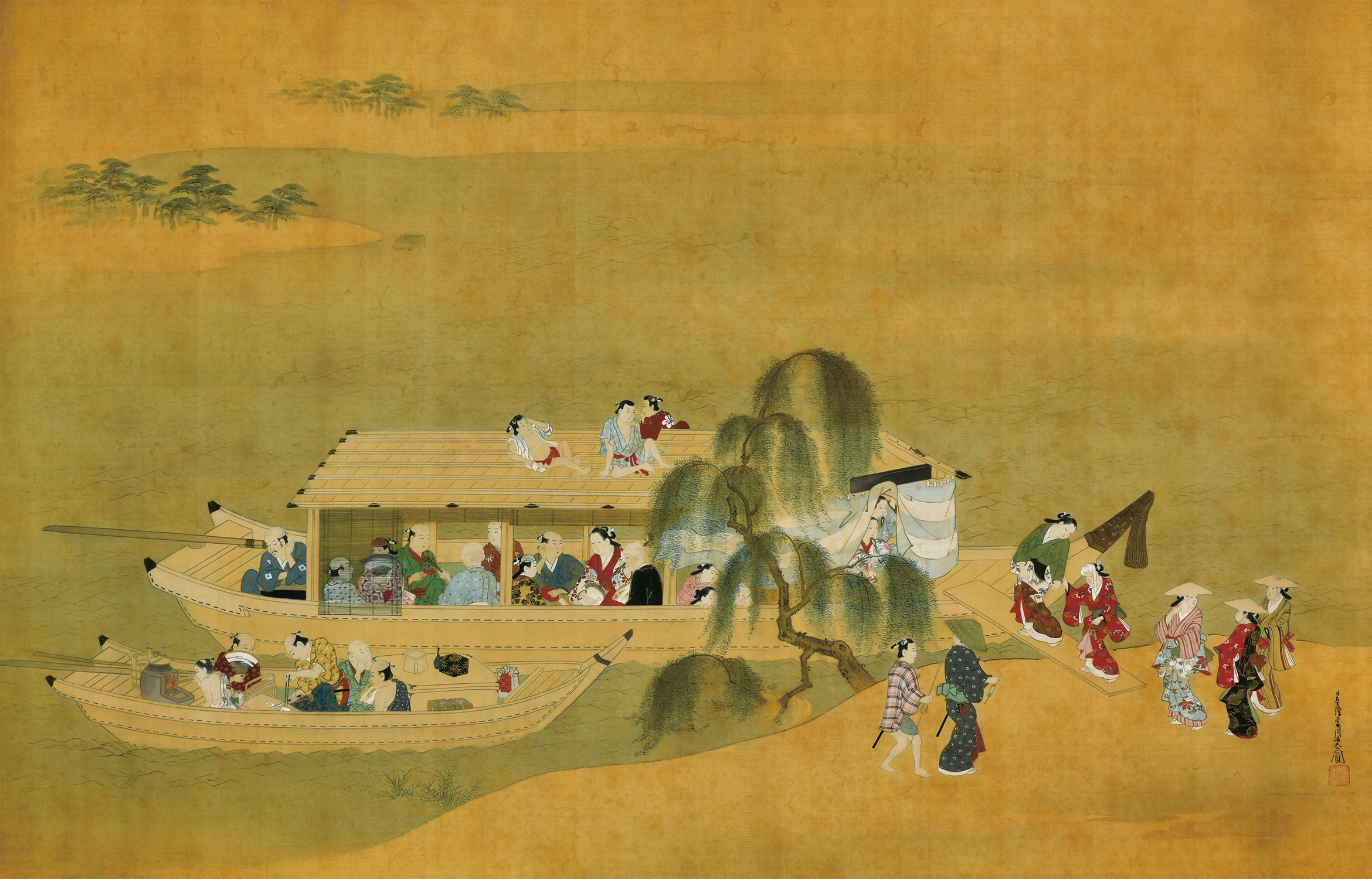.jpg)
private collection (Oct. 15 - Nov. 24)
Important cultural property
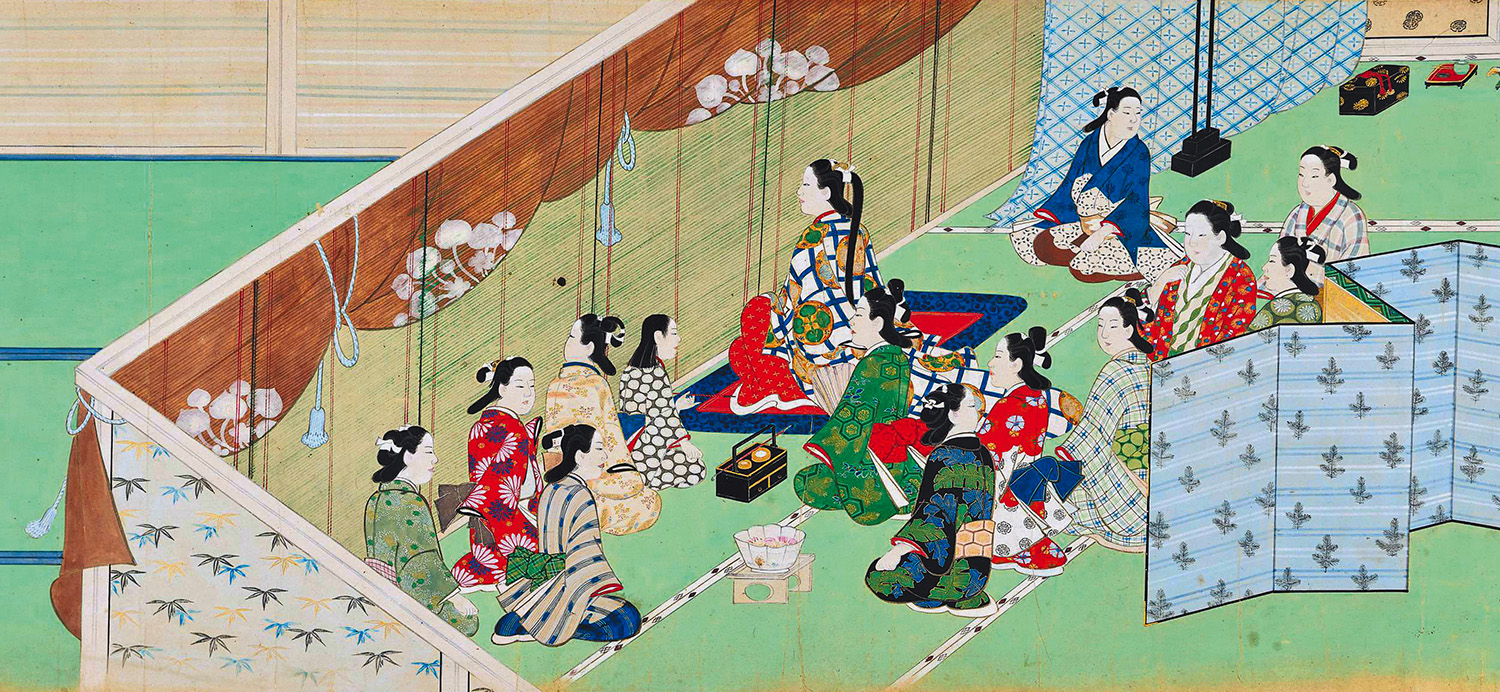%E6%9D%B1%E4%BA%AC%E5%9B%BD%E7%AB%8B%E5%8D%9A%E7%89%A9%E9%A4%A8%E8%94%B5(9%E6%9C%8816%E6%97%A5~10%E6%9C%8813%E6%97%A5).jpg)
Tokyo National Museum (Sep. 16 – Oct. 13)
Source: ColBase(https://colbase.nich.go.jp/)
On display for the first time in the museum
.jpg)
private collection (all terms)
On display for the first time
.jpg)
The Sumida Hokusai Museum(1st term)
Section 2 Becoming a Bijinga Virtuoso
After Shunshō’s death, Hokusai left the Katsukawa school and took the name Tawaraya Sōri. He became deeply involved in the world of kyōka, satirical poems, and produced many bijinga. The images of woman that he created as Sōri—graceful women with oval faces—became exceptionally popular in Edo. Many other masters of bijinga were also active in that period, including Chōbunsai Eishi and Kitagawa Utamaro. Among them, Hokusai was widely recognized as a bijinga virtuoso, so much so that he was mentioned in the 1800 novella Taitōkeigo (Courtesans’ Words Through Connoisseurs). This section presents the quintessence of bijinga, including half-length portraits, from this period.
Utamaro, the genius discovered by Tsutaya Jūzaburō
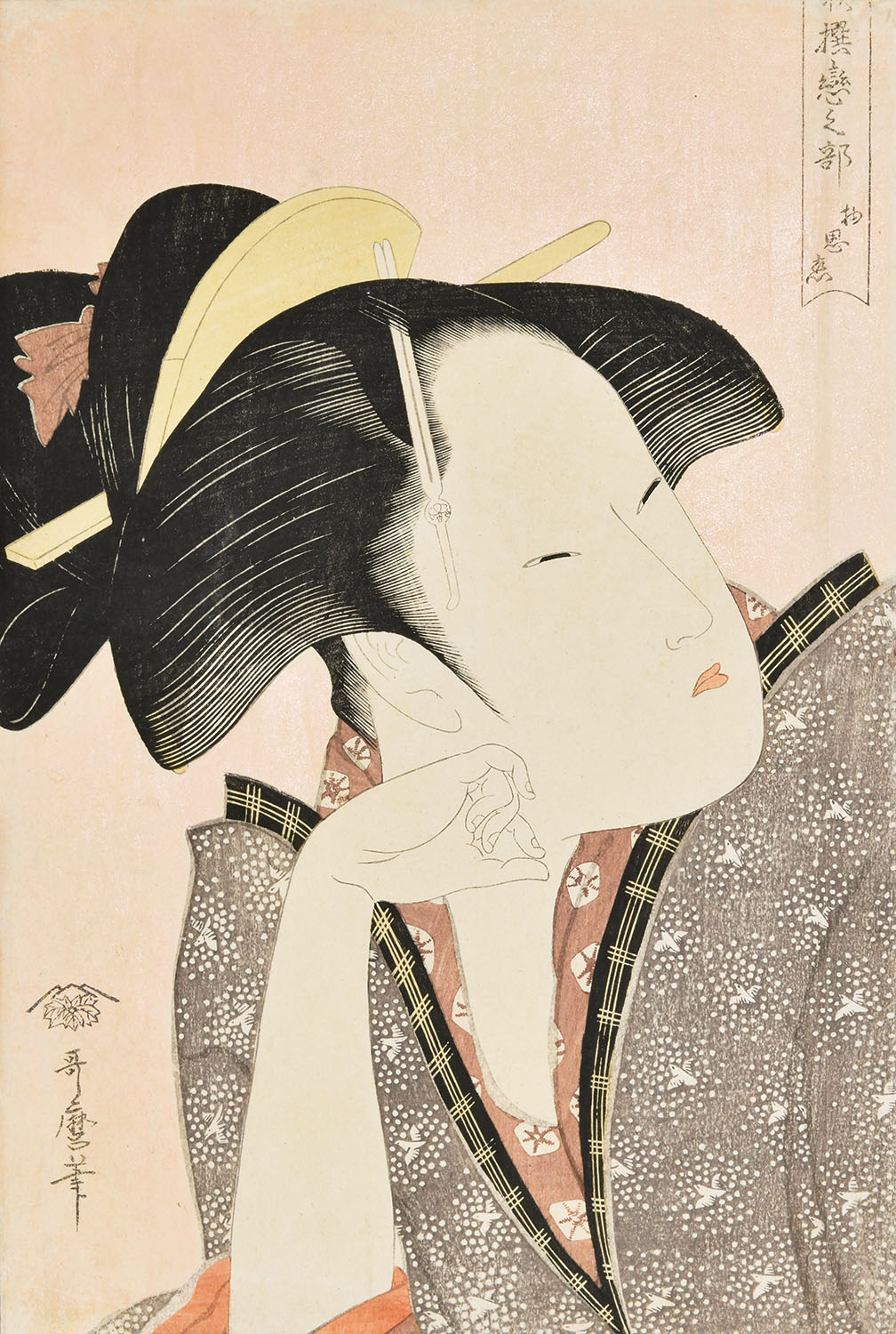.jpg)
Anthology of Poems, the Love Section,
private collection (1st term)
Hokusai’s half-length portraits produced by Tsutajū
.jpg)
from the series Seven Fashionable Habits,
private collection (1st term)
Entire picture is on display since the museum's opening
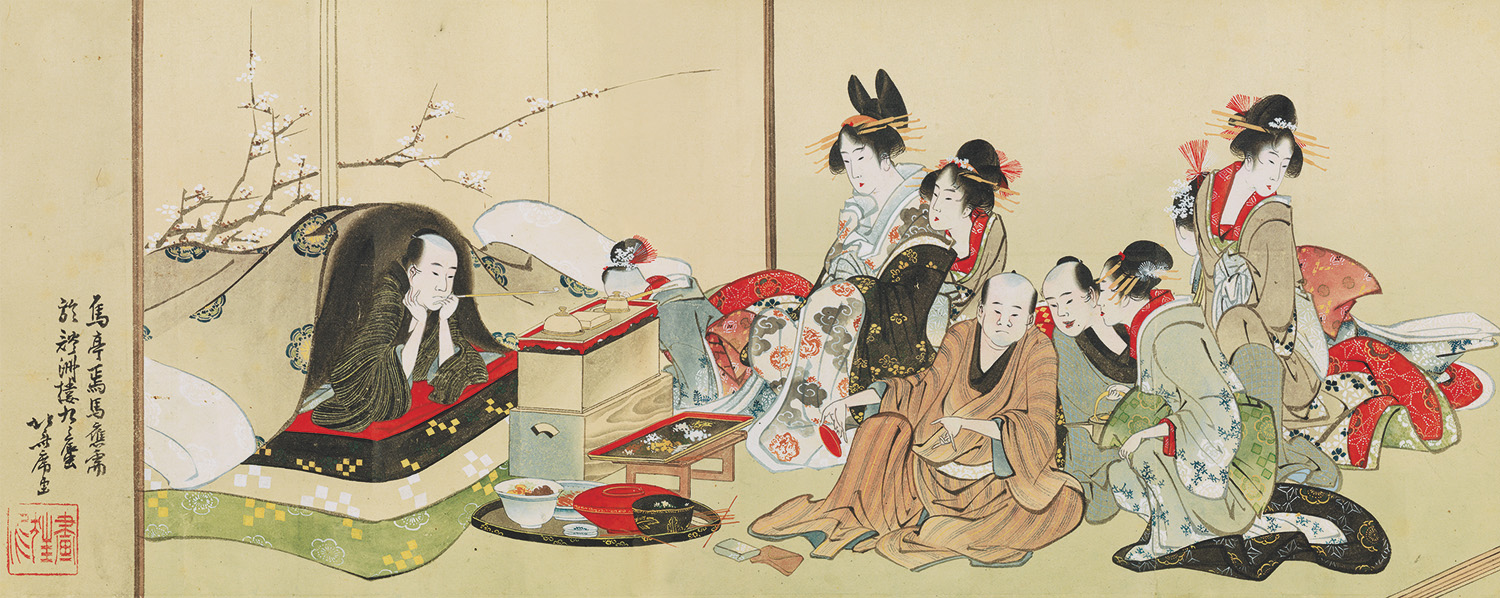%E3%81%99%E3%81%BF%E3%81%A0%E5%8C%97%E6%96%8E%E7%BE%8E%E8%A1%93%E9%A4%A8%E8%94%B5(%E5%89%8D%E6%9C%9F).jpg)
The Sumida Hokusai Museum (1st term)
Section 3 With the Maturity of Ukiyo-e
After his Sōri period, Hokusai gradually developed a powerful style and, in his mature period, created gorgeously sensual bijinga. The context that led Hokusai to change his style was the popularity of images of voluptuously bewitching women in the Bunka and Bunsei eras (1804-30). In this section, we present Hokusai’s works along with works by artists who exemplify the mature period of bijinga, including Keisai Eisen and Utagawa Kunisada.
Important cultural property
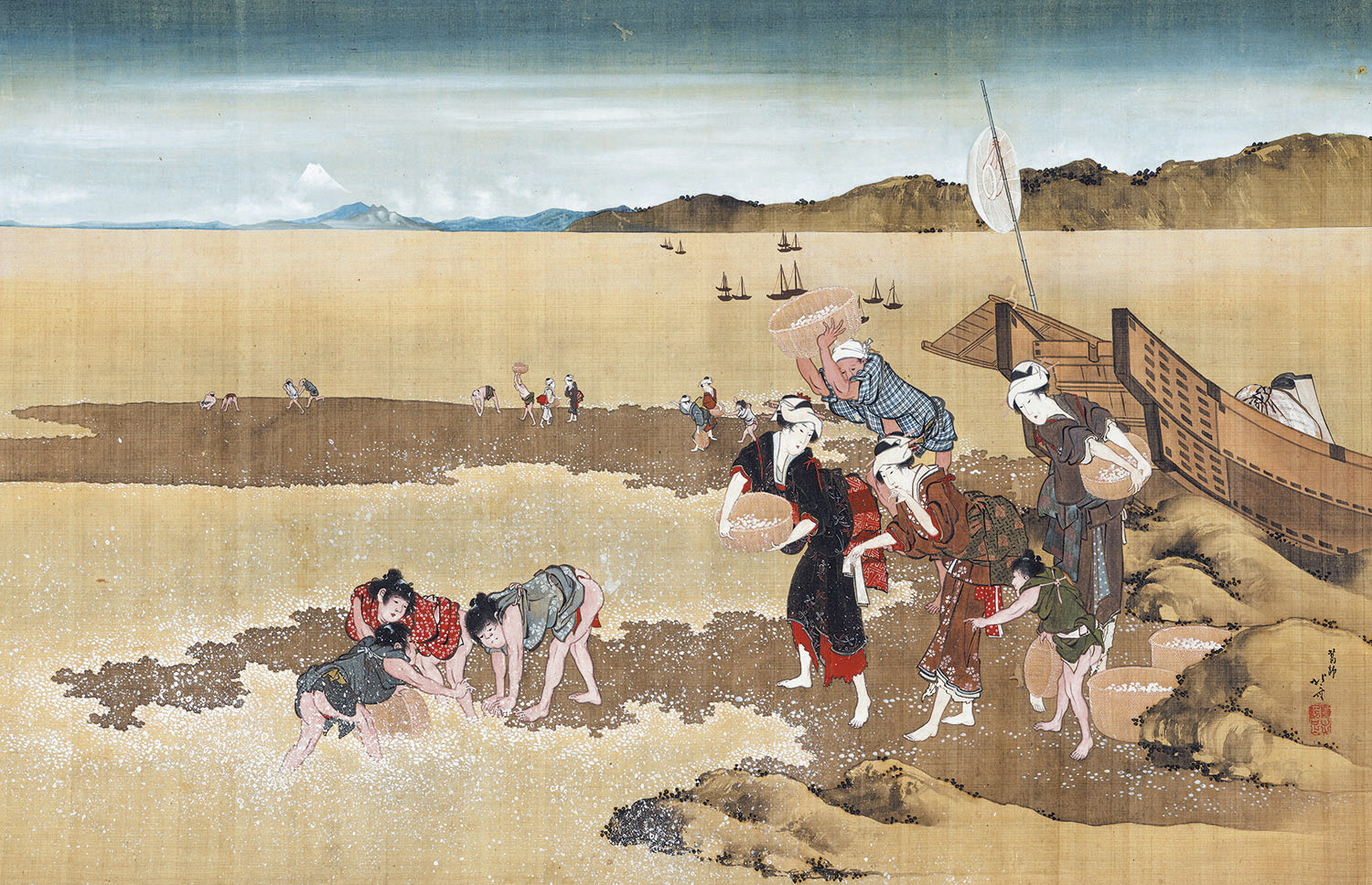.jpg)
Osaka City Museum of Fine Arts (1st term)
Returned home from overseas
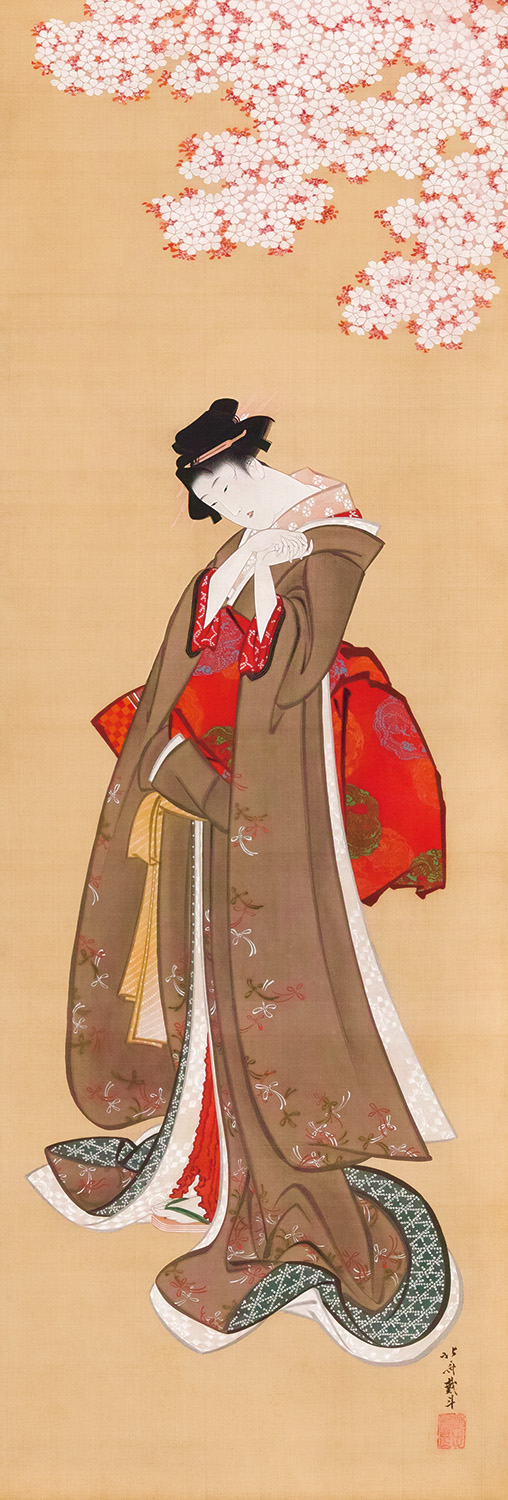.jpg)
Beauty Beneath a Cherry Tree,
private collection (all terms)
Section 4 Members of Hokusai’s Lineage
Hokusai had about two hundred students, included students of students, and many of them made bijinga their forte. One member of his lineage has been attracting great attention in recent years: his daughter, Katsushika Ōi. Hokusai is quoted as saying, “My bijinga are not as good as Ōi’s.” She was indeed very talented. This section presents images of women by Ōi and others who carried on Hokusai’s bijinga style, including Teisai Hokuba, a prolific creator of brush-drawn bijinga, Totoya Hokkei, who studied with Hokusai because he was so enthralled by his bijinga, and the mysterious Ten’en Dōjin.
The mysterious painter Ten’en Dōjin
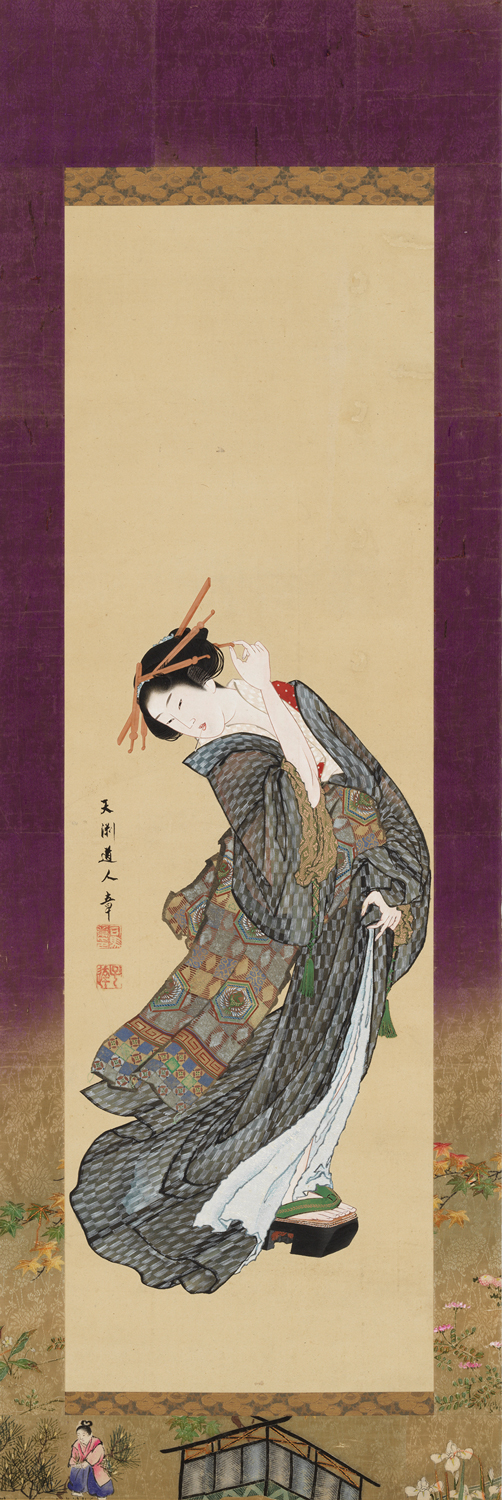
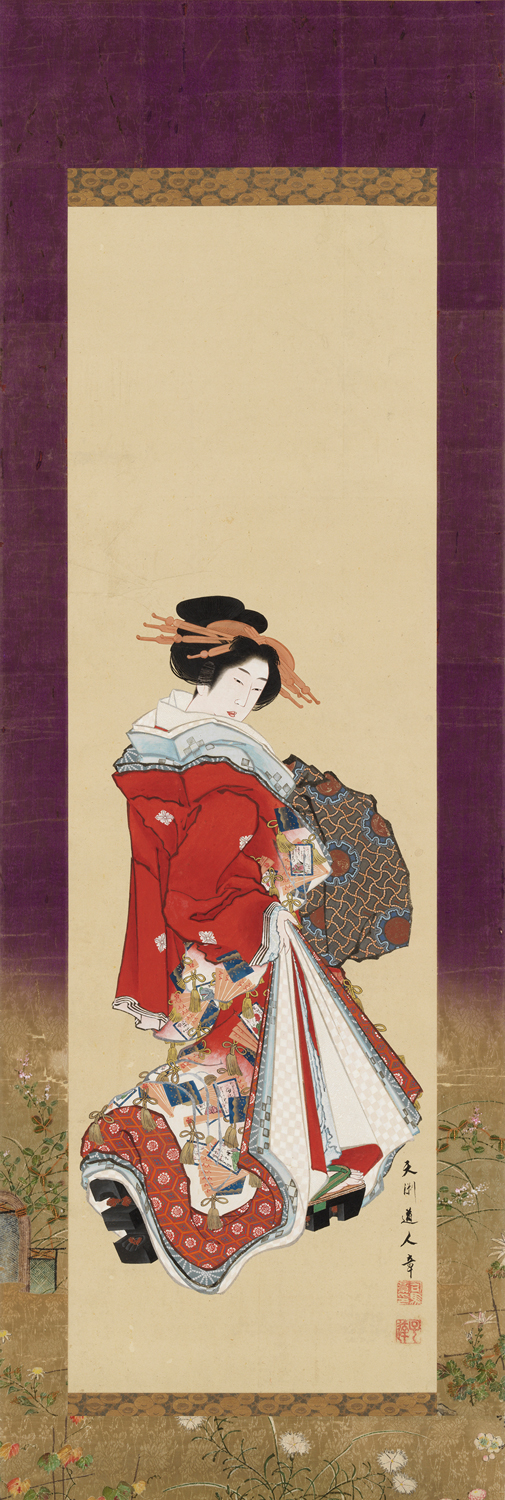
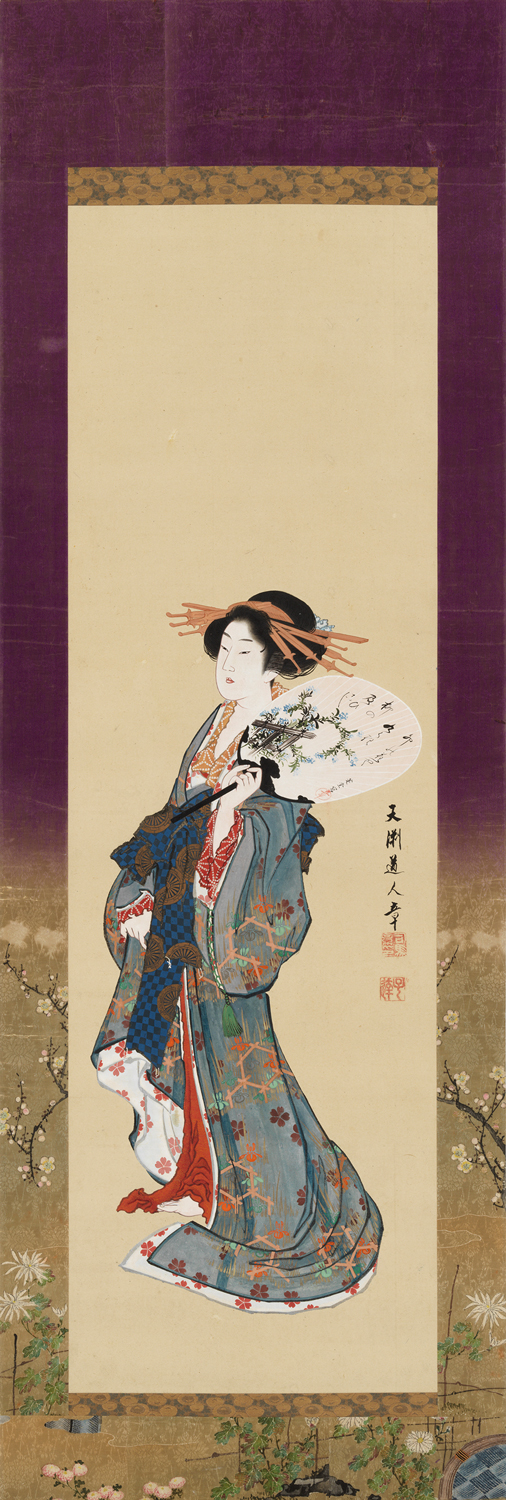
The Sumida Hokusai Museum (1st term)
A legendary masterpiece by Hokusai's daughter, Ōi
.jpg)
private collection(all terms)
List of Works
The Lineage of Hokusai’s Beauties—Rivalry Among Masters: List of Works
Admission Fee
|
|
|
|
|---|---|---|
|
|
|
|
|
|
|
|
|
|
|
|
|
|
|
|
|
|
|
|
|
|
|
|
Tickets are available online for specific dates and times.
Skip the line at reception by booking in advance at the link below.
Note: Availability is limited.
Official Online Ticket Site
Important Notes
・Junior high, high school, and university students (including technical colleges, vocational schools, and specialized training colleges) will be asked to show student ID.
・Adults aged 65 and over will be asked to show proof of age.
・Visitors with one of the following certificates, plus one accompanying person, are eligible for discounted admission: physical disability, intellectual disability, rehabilitation, mental disability, atomic bomb survivor’s health notebook, etc. (Please present your certificate at the time of admission.)
・Tickets are valid only on the date of admission and also include access to "Education Room – Discover Hokusai –".
・For group visits, advance reservation is required. See For Group Visitors.
・For school group visits and field trip programs, advance reservation is required. See For Teachers.
・Once tickets have been purchased, changes and refunds are not possible. Refunds will be made only if the museum closes due to unavoidable circumstances.